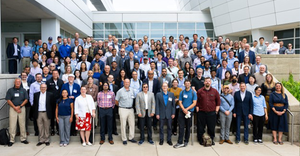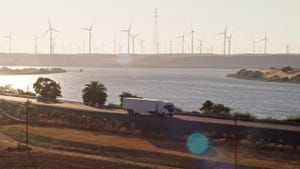RECYCLING: Navy Sails into Recycling
March 1, 2003
Michael Fickes
Paul Brewer believes he can recycle everything. Given time, he just might.
As the recycling program manager and solid waste management director of the Naval Air Station on Whidbey Island, Wash., Brewer raised the base's recycling rate from 4 percent in 1990 to 65 percent at the end of 2002. The Air Station recycling program serves 7,500 military personnel and 2,000 civilians, all of whom works and live on Whidbey Island.
In 1990, prior to Brewer's arrival, the Air Station produced 10,000 tons of solid waste per year and recycled 400 tons. Most of the waste went into a landfill at the Air Station. But the landfill was scheduled to close in 1993. The increase in costs of shipping waste off the island was unacceptable to the Navy. Seeking an alternative, officials created the Navy Whidbey Recycle Program in 1993, set a goal of recycling 50 percent of the solid waste stream by 1995, and hired Brewer to manage the effort.
Brewer exceeded the 1995 goal by a percentage, pushed recycling to 60 percent by 1999 and has made incremental progress to reach 65 percent. The program's next phase is to recycle biosolids and electronic equipment, with a 75 percent recycling goal.
Like all recycling programs, this one begins with weekly collections. Unlike many recycling managers, Brewer believes in source separation. “It costs more to set up a materials recovery facility (MRF) that separates materials,” Brewer says.
Residents and personnel working at the facility receive source separation bins for paper products, cardboard, glass, plastics, cans and aluminum. Four trucks collect most of the materials, with two covering curbside collections and two covering administrative and operational facilities at the Air Station. A fifth truck collects food and yard wastes. Recyclables flow into the MRF and an in-vessel composting facility.
Brewer has set up recycling pathways for more than 50 commodities, some of which go beyond the traditional. For example, the recycling operation collects used clothing that people cannot sell or donate. The clothing is baled and sent to a Seattle firm that redistributes it.
Other components of the program recycle computer disks, toner cartridges, tires, wood, old sofas, packing peanuts and Christmas trees. The program also looks for closed-loop recycling opportunities. No. 2 plastics are sold to a company that remanufactures the material, which the Air Station then buys back.
The program has paid for itself in avoided landfill costs and now generates income. In 2001, the Air Station avoided more than $1 million in landfill costs by diverting 5,800 tons from the waste stream, and sales of recycled materials produced $137,000 in revenue.
Brewer's focus on boosting recycling rates has influenced many. Maybe he can recycle everything.
You May Also Like


